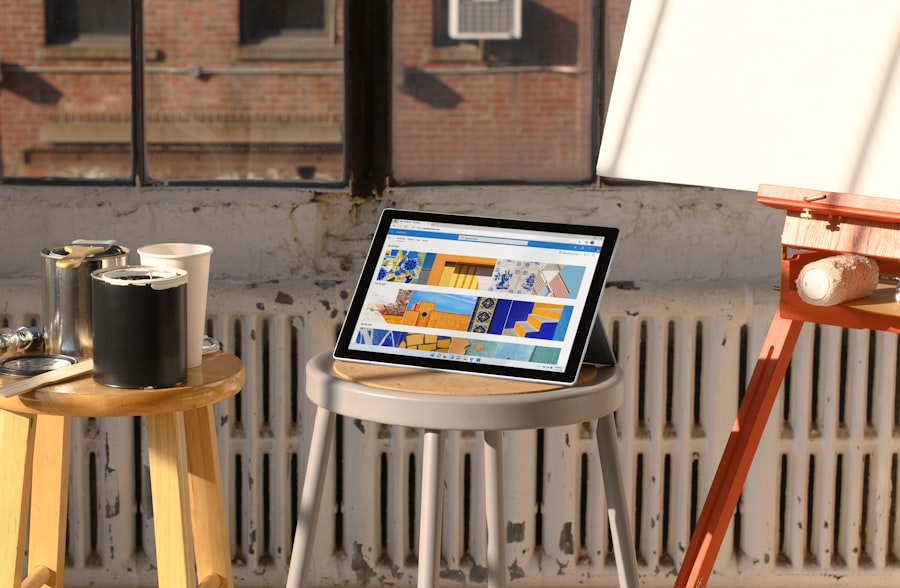In the rapidly evolving landscape of education, technology has emerged as a powerful ally in enhancing learning experiences. Among the various technological tools available, educational tablets have gained significant traction. These devices are designed specifically to facilitate learning through interactive content, multimedia resources, and personalized educational experiences.
With their portability and user-friendly interfaces, educational tablets have become an essential resource for both teachers and students, providing access to a wealth of information and learning materials at their fingertips. The integration of educational tablets into classrooms has transformed traditional teaching methods, allowing for a more engaging and dynamic approach to learning. They offer a range of applications that cater to diverse learning styles, making education more accessible to all students.
As educators strive to meet the needs of every learner, the role of educational tablets becomes increasingly important, particularly for those with learning disabilities. By harnessing the power of technology, we can create inclusive learning environments that empower all students to succeed.
Understanding Learning Disabilities
Learning disabilities encompass a variety of neurological conditions that affect the way individuals process information. These disabilities can manifest in different ways, impacting skills such as reading, writing, mathematics, and even social interactions. Common types of learning disabilities include dyslexia, dyscalculia, and attention deficit hyperactivity disorder (ADHD).
Each of these conditions presents unique challenges that can hinder a student’s ability to perform academically and socially. Understanding the nuances of learning disabilities is crucial for educators and parents alike. It is essential to recognize that these disabilities do not reflect a person’s intelligence or potential; rather, they indicate a different way of processing information.
By fostering an environment of empathy and support, we can help students with learning disabilities navigate their educational journeys more effectively. This understanding lays the groundwork for implementing strategies and tools that can enhance their learning experiences, such as educational tablets.
Benefits of Using Educational Tablets for Students with Learning Disabilities

Educational tablets offer numerous advantages for students with learning disabilities, making them an invaluable resource in the classroom. One of the primary benefits is the ability to provide personalized learning experiences tailored to each student’s unique needs. With a wide array of applications available, educators can select programs that align with individual learning goals, allowing students to progress at their own pace.
This personalized approach fosters a sense of autonomy and confidence in learners who may struggle in traditional educational settings. Moreover, educational tablets facilitate multisensory learning, which is particularly beneficial for students with learning disabilities. Many applications incorporate visual, auditory, and kinesthetic elements that engage multiple senses simultaneously.
This multisensory approach helps reinforce concepts and improve retention by catering to various learning styles. For instance, a student with dyslexia may benefit from an app that combines text with audio narration and interactive visuals, making it easier for them to comprehend and engage with the material.
Features to Look for in Educational Tablets for Students with Learning Disabilities
When selecting educational tablets for students with learning disabilities, certain features should be prioritized to ensure optimal support. First and foremost, the device should have a user-friendly interface that is easy to navigate. Students with learning disabilities may struggle with complex technology, so simplicity is key.
A tablet that offers intuitive controls and clear instructions will empower students to use the device independently. Another important feature is the availability of accessibility options. Tablets equipped with text-to-speech capabilities, adjustable font sizes, and customizable backgrounds can significantly enhance the learning experience for students with visual or reading difficulties.
Additionally, incorporating tools such as speech recognition software can assist students who may have trouble with writing or typing. By providing these accessibility features, educational tablets can create a more inclusive environment that accommodates diverse learning needs.
Tips for Using Educational Tablets to Support Students with Learning Disabilities
To maximize the effectiveness of educational tablets in supporting students with learning disabilities, educators and parents should consider several practical tips. First, it is essential to establish clear goals and objectives for tablet use in the classroom or at home. By defining specific learning outcomes, educators can select appropriate applications and resources that align with these goals, ensuring that tablet use is purposeful and focused.
Furthermore, regular monitoring and assessment are crucial in evaluating the progress of students using educational tablets. Educators should track individual performance and engagement levels to identify areas where additional support may be needed. This ongoing assessment allows for timely adjustments to instructional strategies and resources, ensuring that each student receives the necessary guidance to thrive academically.
Apps and Programs for Students with Learning Disabilities

A plethora of apps and programs are available specifically designed to support students with learning disabilities. These tools cater to various needs and can significantly enhance the educational experience. For instance, apps like “ModMath” assist students with dyscalculia by providing a digital platform for solving math problems without the frustration of handwriting difficulties.
Similarly, “Voice Dream Reader” offers text-to-speech capabilities that can benefit students with dyslexia by allowing them to listen to written content while following along visually. In addition to subject-specific applications, there are also programs focused on executive functioning skills, which are often challenging for students with ADHD. Tools like “Todoist” help students organize tasks and manage time effectively, promoting better study habits and reducing anxiety related to academic responsibilities.
By leveraging these specialized apps and programs, educators can create a more supportive learning environment that addresses the unique challenges faced by students with learning disabilities.
Case Studies and Success Stories
Numerous case studies highlight the positive impact of educational tablets on students with learning disabilities. For example, a school district in California implemented a tablet-based reading program for students diagnosed with dyslexia. Over the course of a year, participating students showed significant improvements in reading fluency and comprehension compared to their peers who did not use tablets.
Teachers reported increased engagement levels and motivation among students who had previously struggled with traditional reading methods. Another success story comes from a special education classroom in New York City where tablets were introduced as part of a comprehensive intervention strategy for students with ADHD. The use of interactive apps allowed these students to focus on tasks more effectively while providing immediate feedback on their performance.
As a result, teachers observed enhanced attention spans and improved academic outcomes among the students involved in the program. These case studies underscore the transformative potential of educational tablets in supporting learners with diverse needs.
Challenges and Limitations of Using Educational Tablets for Students with Learning Disabilities
While educational tablets offer numerous benefits, there are also challenges and limitations associated with their use for students with learning disabilities. One significant concern is the potential for distraction. The very nature of tablets—being multifunctional devices—can lead to off-task behavior if not managed properly.
Students may be tempted to explore games or social media instead of focusing on educational content, which can hinder their progress. Additionally, not all educational apps are created equal; some may lack evidence-based practices or fail to address specific learning needs effectively. Educators must be discerning when selecting applications to ensure they provide meaningful support rather than superficial engagement.
Furthermore, access to technology can be uneven across different schools or districts, leading to disparities in resources available for students with learning disabilities. In conclusion, while educational tablets present exciting opportunities for enhancing the learning experiences of students with learning disabilities, it is essential to approach their implementation thoughtfully. By understanding the unique needs of these learners and leveraging technology effectively, we can create inclusive educational environments that empower all students to reach their full potential.



